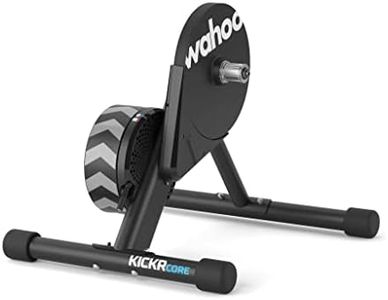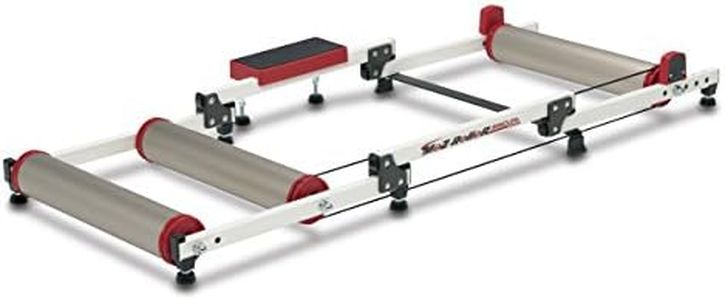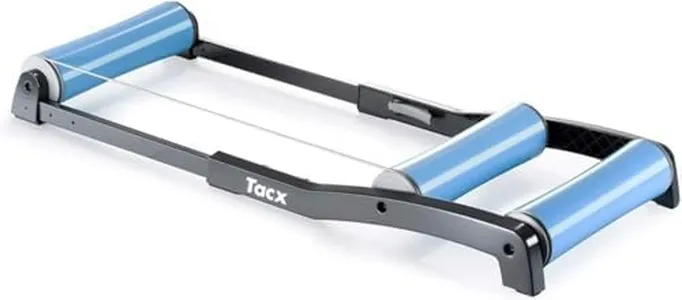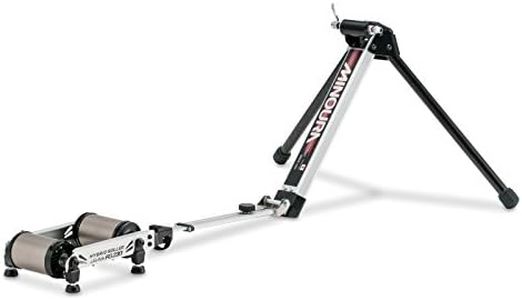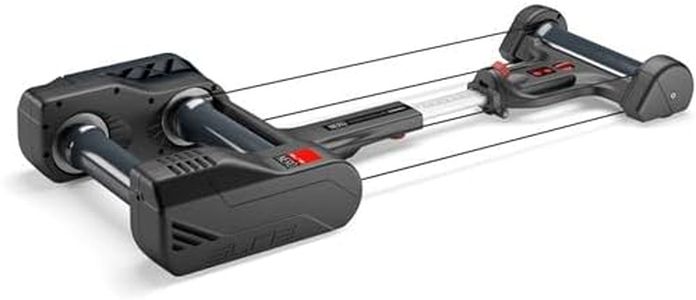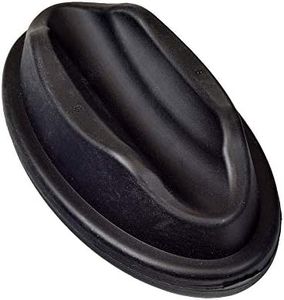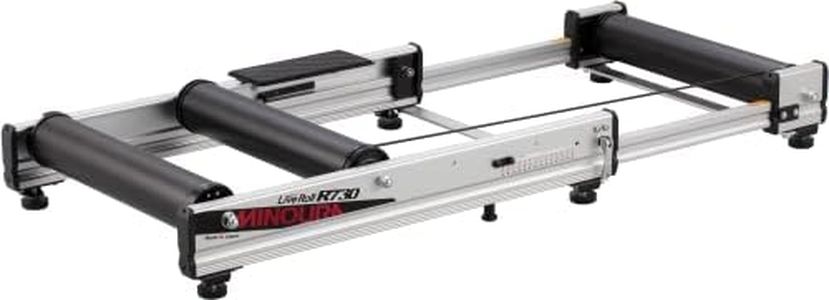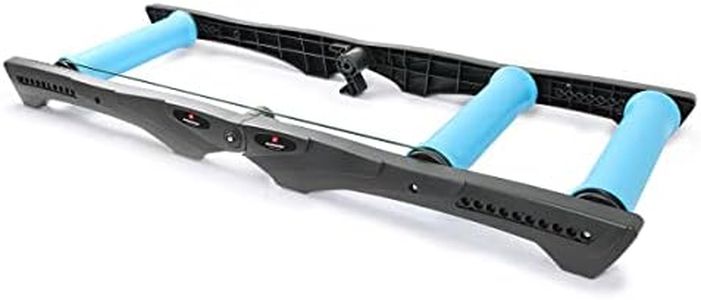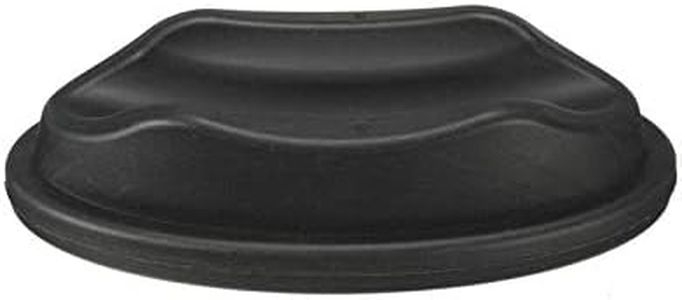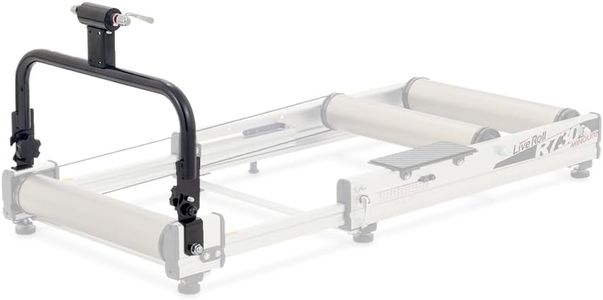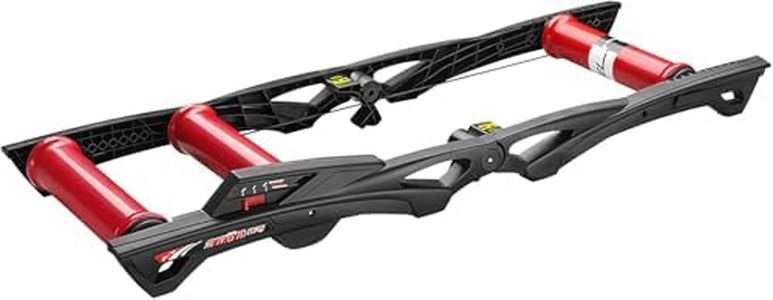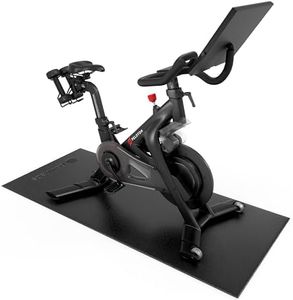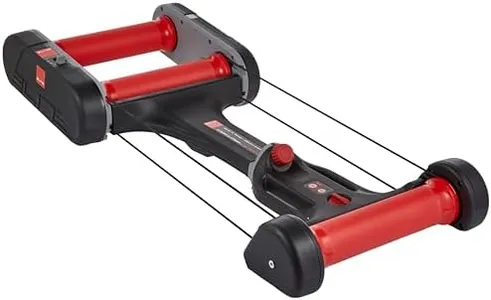We Use CookiesWe use cookies to enhance the security, performance,
functionality and for analytical and promotional activities. By continuing to browse this site you
are agreeing to our privacy policy
10 Best Bicycle Rollers
From leading brands and best sellers available on the web.Buying Guide for the Best Bicycle Rollers
When choosing bicycle rollers, it can feel overwhelming because there are several key features to consider. Rollers are a fantastic tool for indoor cycling training; they help develop balance, pedaling technique, and can make your indoor rides much more engaging. Selecting the right roller means matching it to your fitness goals, bike compatibility, space constraints, and personal preferences for things like stability and resistance. To make a great choice, you'll want to understand the main specs and how each impacts your training experience.Roller DiameterRoller diameter refers to the size of the round rollers that your bike wheels rest on. This is important because it directly influences how much resistance you'll feel while pedaling. Smaller diameters create more resistance because the rollers spin faster, making your workout tougher. Larger diameters provide less resistance and a smoother, faster feel that's good for speed training. If you're looking to improve fitness or simulate hill training, go for smaller diameters. If you want to focus on technique or endurance at higher speeds, larger diameters are best. Your training goals will steer you toward the right choice here.
Roller MaterialThe material of the rollers can affect both the ride quality and durability. Most rollers are made from either aluminum or plastic. Aluminum rollers are generally smoother, quieter, and more durable, making them ideal for frequent or intense use. Plastic rollers might be lighter and less expensive but can wear down faster and may be a bit noisier. If you plan to use your rollers often or want a premium feel, prioritize aluminum. For occasional use, plastic may suffice.
Frame Adjustability and BuildThe frame of the rollers needs to be sturdy and adjustable. Adjustability is important because it allows you to fit different bike sizes securely on the rollers. A stable, well-built frame keeps you safe and confident during use. Look for a frame that can easily extend or retract to match your bike’s wheelbase. If you have multiple bikes or anticipate changes, flexible adjustability will be a plus.
Resistance MechanismSome rollers come with a built-in resistance mechanism, which provides extra difficulty, especially for those wanting to simulate climbing or more intense workouts. Resistance can be created with magnets, fans, or other systems. If you want a basic, road-like feel, non-resistance models do the job. For users who desire more challenge or variable workouts, picking a model with adjustable resistance is important.
Portability and StorageMany rollers are made to fold up for easy storage or transport. This is especially important if you have limited space at home or plan to bring your rollers to races or training sessions elsewhere. Lightweight, foldable models are perfect for those who need to set up and stow away quickly, while more solid, fixed designs may be better if you have a dedicated training spot.
Noise LevelNoise level matters if you live in an apartment or train early in the mornings. Roller material, diameter, and frame design all impact noise. Aluminum rollers are typically quieter than plastic. If you are sensitive to noise or share space with others, choosing models known for quiet operation is smart.
Bike CompatibilityNot all rollers are compatible with every wheel or tire size. Make sure the rollers accommodate your specific bicycle, whether it’s a road, mountain, or hybrid bike. Check adjustability and support for wheelbase and tire width, especially for non-standard setups. Compatibility ensures you ride safely and comfortably.
